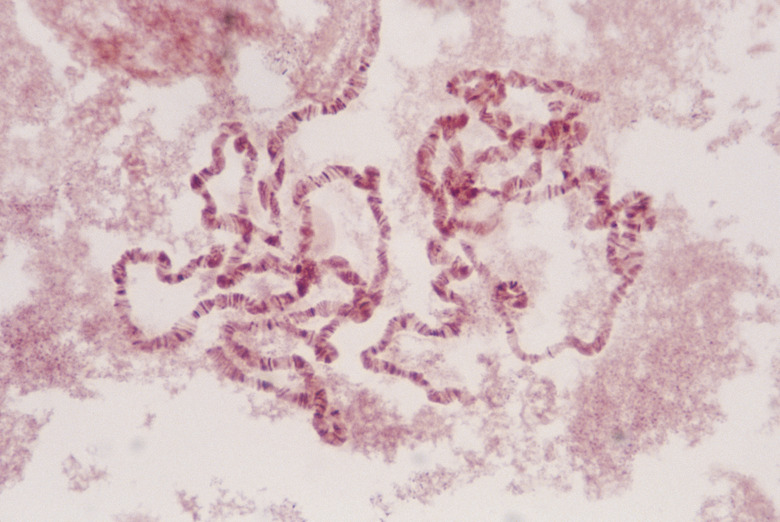How Are Genes On Sex Chromosomes Inherited?
Sex chromosomes give rise to distinct patterns of inheritance. In many species, gender is determined by sex chromosomes. In humans, for example, if you inherit X and Y chromosomes, you'll be male; two X chromosomes will make you female. In some other species such as grasshoppers, the story is very different. Females have two X chromosomes, and males have only one. Y chromosomes are absent.
X and Y Chromosomes
X and Y Chromosomes
Whether you are male or female, you will inherit one X chromosome from your mother; all genes on that chromosome come from her. Your gender is ultimately determined by your father, who has both an X and a Y chromosome and could contribute either of them. That's why genes on the Y chromosome are passed down only in the male line. The only way you can inherit and pass on a Y chromosome is if you are male.
Sex-Linked Inheritance
Sex-Linked Inheritance
Traits and disorders caused by genes on sex chromosomes exhibit unusual sex-linked patterns of inheritance. If a trait or disorder is caused by a gene on the Y chromosome, for example, it will only appear in males of the family and will be passed down from father to son. Daughters will neither inherit nor pass on the disorder.
If a trait or disorder is caused by a gene on the X chromosome, however, the trait or disorder will be much more common in males in a family than in females. Females have two X chromosomes and therefore two copies of the gene, one of which could mask the influence of the other. These are called X-linked traits.
X-Linked Traits
X-Linked Traits
There are many examples of X-linked traits. One of the most famous is X-linked colorblindness. To have this kind of colorblindness, a woman must inherit the colorblindness gene from both her mother and father. If she has one "normal" and one "colorblind" copy of the gene, the normal gene will override the one related to colorblindness. When this occurs, she will be a carrier of colorblindness with normal color vision. A man can have X-linked colorblindness simply by inheriting one copy of the colorblindness gene because he only has one X chromosome–the one from his mother.
Inheritance Scenarios
Inheritance Scenarios
If a woman has X-linked colorblindness, but her male partner does not, all of her sons will be colorblind, but all of her daughters will have normal color vision. Her daughters, however, would be carriers and able to pass the disorder to their sons.
If a man has X-linked colorblindness, none of his sons will have the disorder because he gave them a Y rather than an X chromosome. Because he passes his X chromosome to his daughters, however, all of them will be carriers with one copy of the colorblindness gene. If both male and female partners have X-linked colorblindness, so will all of their children. This unusual pattern of inheritance is typical of X-linked traits.
References
- Benjamin A. Pierce: Genetics: A Conceptual Approach, 2006
- Palomar College: Sex-Linked Genes
Cite This Article
MLA
Brennan, John. "How Are Genes On Sex Chromosomes Inherited?" sciencing.com, https://www.sciencing.com/genes-sex-chromosomes-inherited-2313/. 24 April 2017.
APA
Brennan, John. (2017, April 24). How Are Genes On Sex Chromosomes Inherited?. sciencing.com. Retrieved from https://www.sciencing.com/genes-sex-chromosomes-inherited-2313/
Chicago
Brennan, John. How Are Genes On Sex Chromosomes Inherited? last modified August 30, 2022. https://www.sciencing.com/genes-sex-chromosomes-inherited-2313/
